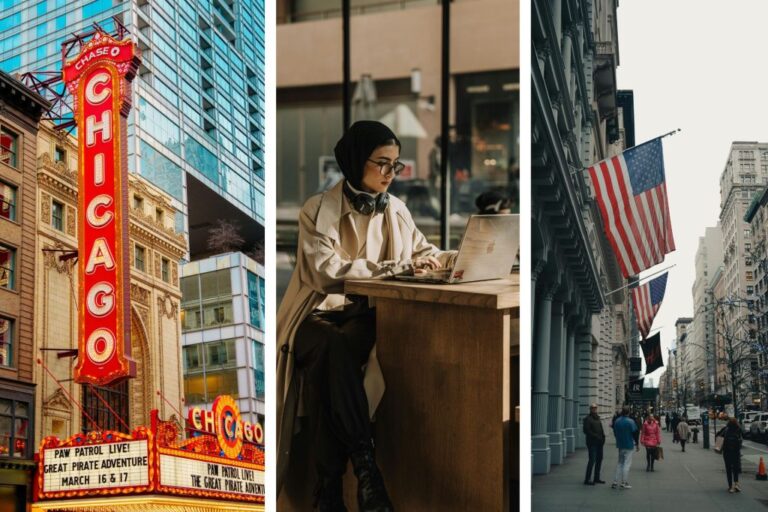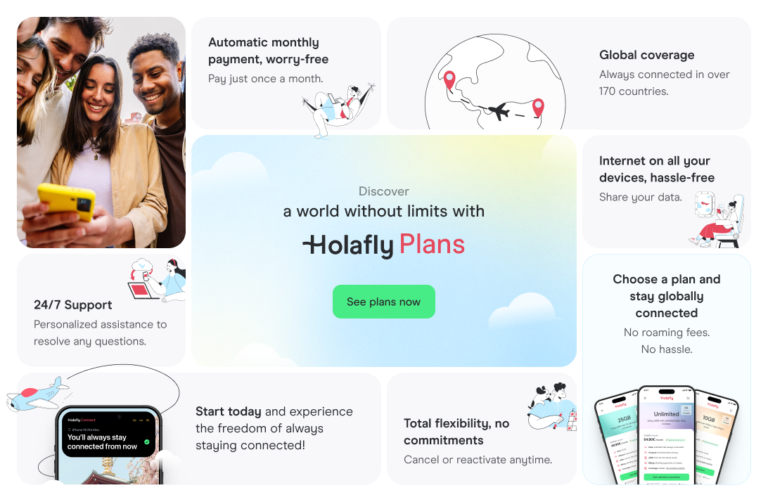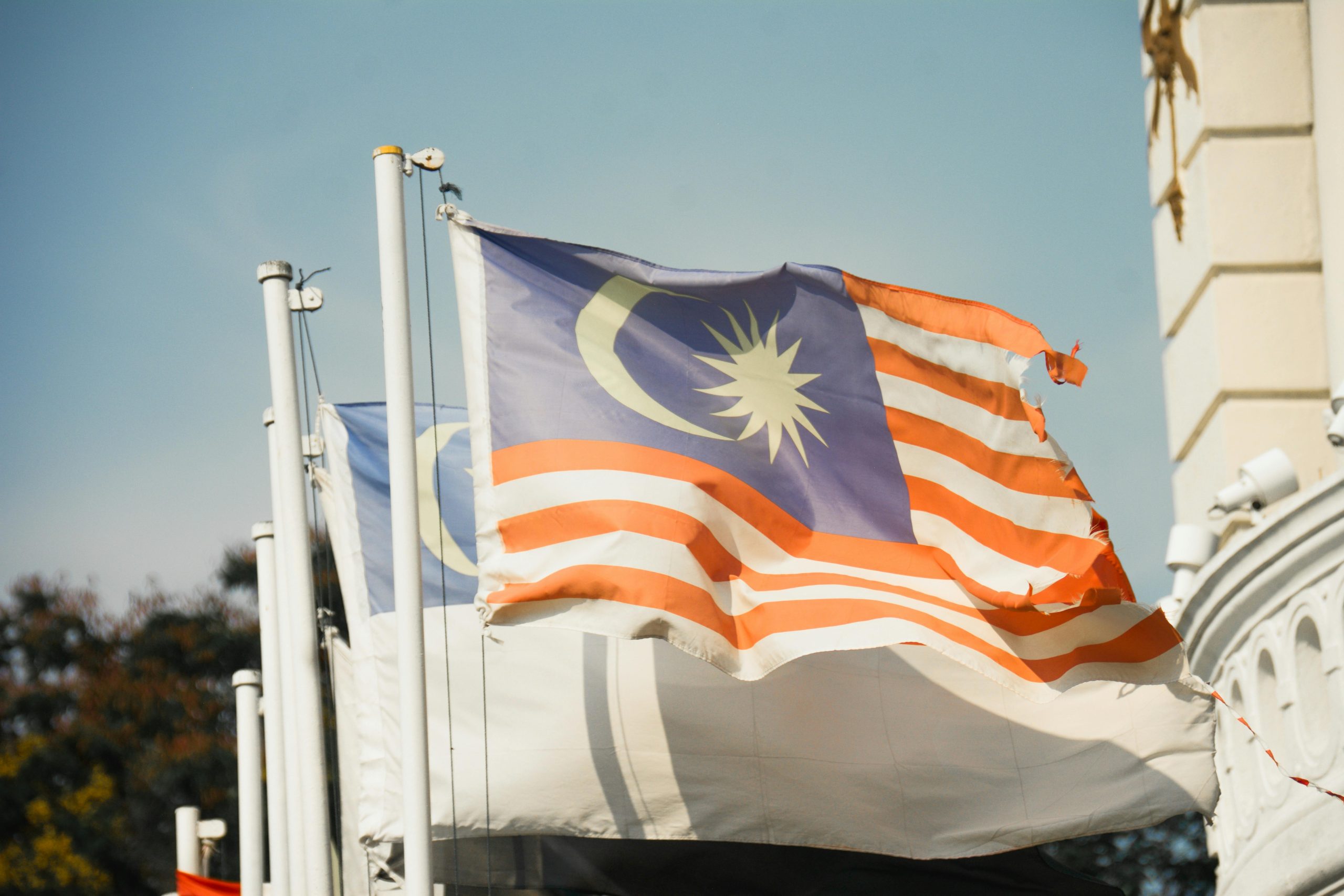Digital nomad visa in USA: Requirements and Application tips for 2025
The digital nomad visa for the US can be obtained with other alternative visas. Find out how to apply and pack your bags!
The digital nomad visa for the US, opens the door to being able to live in the country while continuing to work remotely. Have you always wanted to live the American dream? The United States is one of the most attractive destinations for those who choose this lifestyle, thanks to its advanced infrastructure, cultural diversity and vast job opportunities. However, getting the right visa can be a complicated process, especially if you are not familiar with the legal and fiscal requirements involved.
As one of the most sought-after destinations for digital nomads, it is important to understand what options currently exist for legally entering the United States with the intention of working remotely. Below, we tell you more about how the country’s visa system may apply to digital nomads and what alternatives may be useful as migration policies evolve. All you have to do is pack your suitcase! By the way, I’m sure you will find our post here helpful: Digital Nomad Packing List: Must-Have Essentials
What is the digital nomad visa in the US and how does it work?
Unlike in other countries, there is no digital nomad visa for the United States as such. However, there are several types of visas that can be adapted to the needs of those who wish to work online from the country. Among the most common options for digital nomads are the B1/B2 visas, which are visitor or business visas, and the O-1 visa, which is for people with extraordinary ability.
The B1/B2 visa allows entry to the country for tourism or business purposes, but does not allow formal employment with a local company. However, if your work is for a foreign company and you are working remotely from the US, this visa could be a viable option in the short term. On the other hand, the O-1 visa is aimed at individuals who demonstrate exceptional skills in fields such as science, art, education, business or sport, which may be applicable if you are a digital nomad working as a highly specialised content creator or developer.
1. Characteristics of the B1/B2 visa
Although the United States does not have a specific visa for digital nomads, each of the above options offers certain advantages that may be useful depending on your personal situation. Here are the main features of the B1/B2 visa.
| Length of stay | Up to six months, with the possibility of extension. |
| Permitted activities | Business meetings, conferences, events, tourism and remote work for foreign companies. |
| Prohibitions | Formal employment in the US. |
| Renewal | Possible, depending on the requirements of each case. |
2. Characteristics of the O-1 visa
This type of visa is an opportunity for digital nomads to enjoy significant time in the US whilst they are working remotely. While waiting for the United States to join the long list of countries that already have a specific visa for digital nomads, the O-1 visa is an excellent alternative. Want to know more?
| Length of stay | Up to three years, with the possibility of extension. |
| Permitted activities | Work in your area of specialisation, either as a freelancer or under contract. |
| Prohibitions | Changing jobs without notifying the Citizenship and Immigration Service. |
| Renewal | Depending on the projects or contracts in force. |

General visa requirements for applying as a digital nomad in the US
The process for applying for a digital nomad visa for the USA varies depending on the type of visa. Here we detail the common requirements for B1/B2 and O-1 visas, which are the most commonly used by digital nomads. In both cases, the application process may require an interview at the embassy or consulate, where you will need to prove that you meet all the requirements and that you do not intend to stay illegally in the country.
1. Visa requirements B1/B2:
- Income level: It is recommended that you have proof of financial solvency, such as bank statements, to demonstrate that you can support yourself during your stay in the country without relying on local labour.
- Language skills: It is not an official requirement to speak English to obtain this visa, but it is very useful to have a basic or intermediate level to get by in your daily activities.
- Health insurance: As costs are high, having international health insurance to cover any emergencies while you are in the US is advised.
- Criminal record: A clean record is required, i.e. no criminal record.
- Identification documents: A passport valid for at least the time you plan to be in the United States is essential. In addition, you must present your completed DS-160 form and confirmation of your interview appointment at the embassy or consulate.
- Proof of employment or professional activity: Although the B1/B2 visa is not a work visa, you can show that you are working remotely for a foreign company or project.
- Previous visits to the US: If you have visited the US previously, you may be asked for the purpose, dates of entry and exit, and whether you have complied with the terms of your previous visas.
2. O-1 visa requirements:
- Level of income: You need to show that you have a job offer or a contract with a company or entity in the United States that will pay you for your services. You must also prove that your income is in line with your industry standards.
- Language skills: It is not a mandatory requirement to speak English, but it is extremely useful, as you will need to communicate with the people and entities that will hire you or collaborate with you in the USA.
- Health insurance: Although not a visa requirement, international health insurance is essential due to the high medical costs in the US.
- Criminal record: The applicant is not allowed to have a criminal record. You may be asked to provide a criminal record certificate from the country where you reside or from countries where you have lived for a long period of time.
- Identification documents: A valid passport is required and an approved petition (form I-129) from your employer in the US is also required. This application must be submitted by a company or individual who is willing to sponsor your O-1 visa.
- Proof of employment or professional activity: This is one of the most important requirements for the O-1 visa. You must demonstrate that you have extraordinary abilities in your field (art, science, education, business, sports, etc.) and this can be proven by international awards, publications, participation in recognised projects, or other significant achievements.
- Previous visits to the US: If you have visited the US in the past, you are likely to be asked for details of your previous visits, especially if they were for previous work or projects you carried out in the country.
3. Documentation to be submitted
When applying for a digital nomad visa for the US, you can apply for a digital nomad visa. In the US, you will need to present a number of important documents to prove your status as a digital nomad. Documentation varies depending on the type of visa you are applying for. Submitting complete and orderly documentation can facilitate the visa approval process. Here are the most common documents:
| Valid passport | Your passport must be valid for at least six months after your planned stay. |
| Form | You must complete the DS-160 form for non-immigrant visas or the I-129 form if you are applying for an O-1 visa. |
| Letter of intent | Explain the reason for your stay in the US. How it relates to your remote work or digital business. |
| Economic solvency | Bank documents proving that you have sufficient resources to support yourself during your stay without the need to work locally. |
| Employment letter | If you are a freelancer, it is recommended that you bring a letter from the international clients or employers you work with. |
| Extraordinary Abilities (O-1 visa) | Awards, recognitions or contracts that demonstrate your relevance in your field. |

Where can I apply for a visa as digital nomad in the US?
Applying for a digital nomad visa in the US. The US involves a number of specific steps and formalities that must be carried out through official channels. These are the places and platforms where you can apply for digital nomad visas in the US, such as B1/B2 and O-1:
1. U.S. Embassies and Consulates in your home country
The most common way to apply for a visa for digital nomads in the US is through a U.S. embassy or consulate in your country of residence. This is where visa interviews are held and where the required documentation for each type of visa is submitted.
- Appointment process: Before applying for a visa, you will need to fill in the DS-160 form online, which is mandatory for all temporary visa applications, such as B1/B2 and O-1. You can then schedule your appointment through the website of your nearest embassy or consulate.
- In-person interview: You will probably have to attend an in-person interview, especially if this is your first time applying for a visa to the U.S. At this interview, your eligibility will be reviewed and you will have to present your documents.
Important: If you are a frequent traveler and want to stay connected without worrying about expensive roaming or looking for a new SIM at every destination, Holafly’s subscription plans are for you. With a single eSIM, enjoy internet in more than 170 countries for a fixed price and no surprises on your bill. Travel without limits and connect easily and securely! 🚀🌍

2. USCIS (United States Citizenship and Immigration Services)
If you are already in the United States, the United States Citizenship and Immigration Services (USCIS) is the official entity where you can carry out some procedures related to visas such as the O-1. USCIS is responsible for processing non-immigrant visa petitions involving temporary employment or extraordinary ability.
- O-1 application process: For the O-1 visa, the employer or sponsor must file an I-129 petition with the USCIS. This is an application that demonstrates that you, as a digital nomad, have extraordinary skills and a job offer in the US.
- Online services: Through the USCIS website, you can track your application, obtain forms and find answers to common questions about the visa process.
3. Official website of the Digital Nomad Visa for the USA.
The U.S. State Department also operates a dedicated non-immigrant visa application platform, where you can complete the DS-160 form to start the process. The website is very intuitive and easy to use.
- Form DS-160: This is the first step in applying for any non-immigrant visa, including B1/B2, and is completed electronically. This form asks for detailed information about your purpose of travel, personal and professional background.
- Payment of the application fee: When completing the form, you will have to pay the corresponding fee for your type of visa. For example, the fees for B1/B2 visas are approximately $160, while O-1 visas have a higher fee.
Where can I get tailored advice?
Applying for a digital nomad visa in the US can be confusing if you do not have experience with migration processes. Fortunately, there are many agencies and consultants who specialise in helping professionals like you. Some agencies in the United States and other countries include:
| VisaPlace | They provide legal advice for different types of work visas and temporary stay in the USA and are known for their attention to freelancers and digital nomads. |
| Boundless | This platform offers an easy way to manage the visa process, guiding you step by step. |
| Sabre International | It is an international firm based in several countries that can help you understand your tax and immigration situation as a digital nomad. |
Frequently asked questions about the visa as a digital nomad in the US
No, it is generally not possible to change your visa once you are in the country. You would have to return to your home country to apply for a visa.
If you do not work for a US company and your source of income is outside the US, in principle you should not be taxed in the US, but it is advisable to consult a tax advisor.
Depending on the type of visa you use, you can stay up to six months as a tourist on a B-1 visa, although you cannot do local work.
If you want to work for a US company, you will need a different work visa than the US digital nomad visa that allows for such activity, such as an H-1B.
Cities such as Austin, San Francisco and Miami are popular for their freelance communities, coworking spaces and culture.
In Memphis, Tennessee or North Carolina you can find rents in the $1,200 range. In contrast, cities such as San Francisco and New York are known for their high cost of living, with average rents of $3,000. Choosing a city with a lower cost of living can allow digital nomads to enjoy a higher quality of life and save money while working remotely.





 Language
Language 


















 No results found
No results found







